I’ve always said that sales is in the customer service business; you can’t sell someone anything if you have a toxic relationship with them.
A toxic relationship is a relationship characterized by behaviors exhibited by one party that are emotionally damaging to another.
We hear about toxic personal relationships where one person inflicts emotional and sometimes physical pain on their partner, but toxicity isn’t limited to people relationships; it’s also related to organizations, and the relationship they have with their customers.
A toxic service relationship is damaging to both the customer because of how they are treated by the organization, and to the organization itself as unhappy customers typically move to another supplier with repeated mistreatment.
Feelings should be the judge
Toxicity should be viewed as THE criteria to observe and judge the relationship an organization has with its customers because it focuses on the EMOTIONS stirred up in the customer — it expresses how the customer FEELS about how they are being treated.
A toxic service environment in sales is manifested by behaviors that annoy, frustrate, anger, sadden, infuriate, exasperate, irk, vex, and piss off the people who come into contact with it every day.
In my 30+ years leading sales organizations, I learned that you lived or died on how you served customers.
I learned that these 5 characteristics that, if left unattended, will destroy any customer relationship.
Distain for humans
Ever talk to someone in a sales organization who treated you with a bad attitude? Who talked down to you? Who had absolutely no interest in what you had to say?
Unfortunately, we’ve all had the experience of engaging with an employee who really didn’t want to talk to us. These people really don’t like people and yet they are in the position of having to engage with other people. Employing inbound call center services is a way to not destroy the first impression for possible new clients or customer relationships.
In a heartbeat, this person can destroy value because they lack empathy and caring for fellow humans; they quite frankly don’t give a sh##. Strange that a sales employee that would rather be taking inventory or filling out requisitions would be given the keys to the organization’s brand vault.
The recruitment process in toxic environments is wrong. It doesn’t place a priority on the skills and attitude necessary to create miraculous service moments with customers.
It doesn’t prove whether or not someone has the innate desire to care for others because that’s what amazing service requires. If just ONE of your customer servers doesn’t like people, you are on your way to having toxic relationships with your most valuable assets.
Outsourced call centers
Organizations that don’t manage their call centers well nurture toxic behavior even though they believe they are doing the right thing.
The problem is, it’s the right thing for THEM and not their customers. They use a call center to manage costs efficiently not to build customer loyalty by creating memorable customer experiences.
Two specific call center attributes, in my view, contribute to toxicity — wait times and fluency in the English language.
How on earth can you say “Your call is important to us” and force someone to wait for a service rep for 45 minutes? It’s a joke really. The fact is (I ran call centers), staffing a call center is all about cost, not level of service even though they would claim the opposite.
Because if the staffing criteria WERE based on providing a high level of service your call would be answered in less than a minute — my target was to answer 80% of the incoming calls within 10 seconds (3 telephone rings).
The second issue I have with call centers is the ability of some reps to engage in an understandable conversation. To be honest, I can’t understand many of them because of their strong foreign accents. They may have passed English exams but they can’t converse with a customer in a smooth way.
As a result, I get annoyed and frustrated as my needs go unmet. Unfortunately, few organizations use call centers to build customer relationships; they create toxic behavior.
Dumb rules
Many organizations design their policies to control customer engagement rather than to make it easy and enjoyable. They decide that the needs of the organization come before taking care of their customers.
A statement from customer servers like “You can’t … because it’s not our policy” is evidence that what the customer wants won’t be accommodated because of a rule that satisfies a different purpose.
Often these policies made no sense to the customer. They are rigid and strict and serve the organization only.
Toxic behavior is expressed by negatives like “You can’t” or “Sorry but…” Healthful behavior, on the other hand, leads with “Of course”, “Yes” and “Sure, we can do that”.
No power
In toxic serving environments, frontline employees rarely are empowered to make decisions on customer requests that are not consistent with rules and policies. They are escalated to a supervisor for resolution.
In my experience the process is slow and cumbersome: the service rep explains why the customer can’t do what they want —> the customer is annoyed and insists —> the rep goes looking for a supervisor —> the customer explains again what they want —> the supervisor explains why the customer can’t do what they want —> customer gets more annoyed and insists —> the supervisor either maintains the “no” position or gives in —> the customer is still annoyed regardless of the outcome because of the process they were forced to go through.
Ironically, the policy to escalate “deviant matters” to a supervisor has no positive customer outcome, and furthermore the employee feels neutered because they provided no value to the engagement process; they looked like an idiot in front of the customer because they couldn’t solve their problem.
Rewarding non-loyalty
Toxic cultures are more interested in acquiring more customers; they spend less time on honoring and rewarding the ones they currently have. After all, why invest the money when you already have the customer? False logic and extremely short-sighted.
So special deals like “Leave your current supplier and come over to us for 3 months free service” are offered to prospects but the offer is not made available to existing customers.
With such behavior how can any organization claim they put their customers first? It’s a dishonest proposition.
Healthy environments make new deals and special promotions available to existing loyal customers first — loyalty is rewarded before a new customer.
Promotions and low price deals are typically marketing decisions but they are integral to maintaining intimate customer relationships and therefore marketing needs to join the serving team.
Toxicity kills customer relationships and yet so many organizations practice unhealthy behavior every day.
Stay on the lookout for these symptoms in your organization and be prepared to change your behavior immediately if you respect your loyal customers.



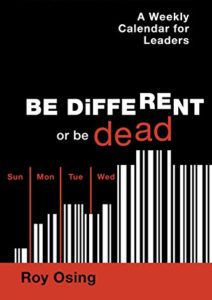

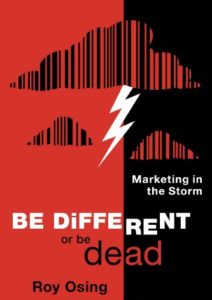

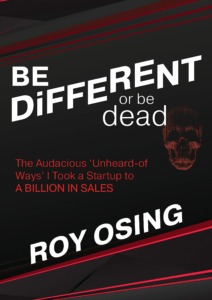
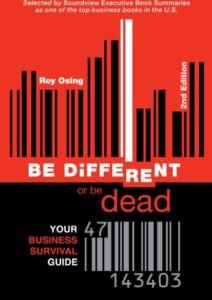
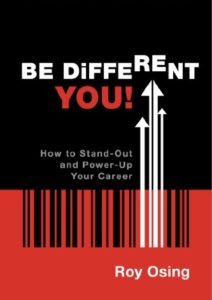








Comments (1)
The ability to retain loyal customers is embedded in your ability to change behaviour. Great stuff